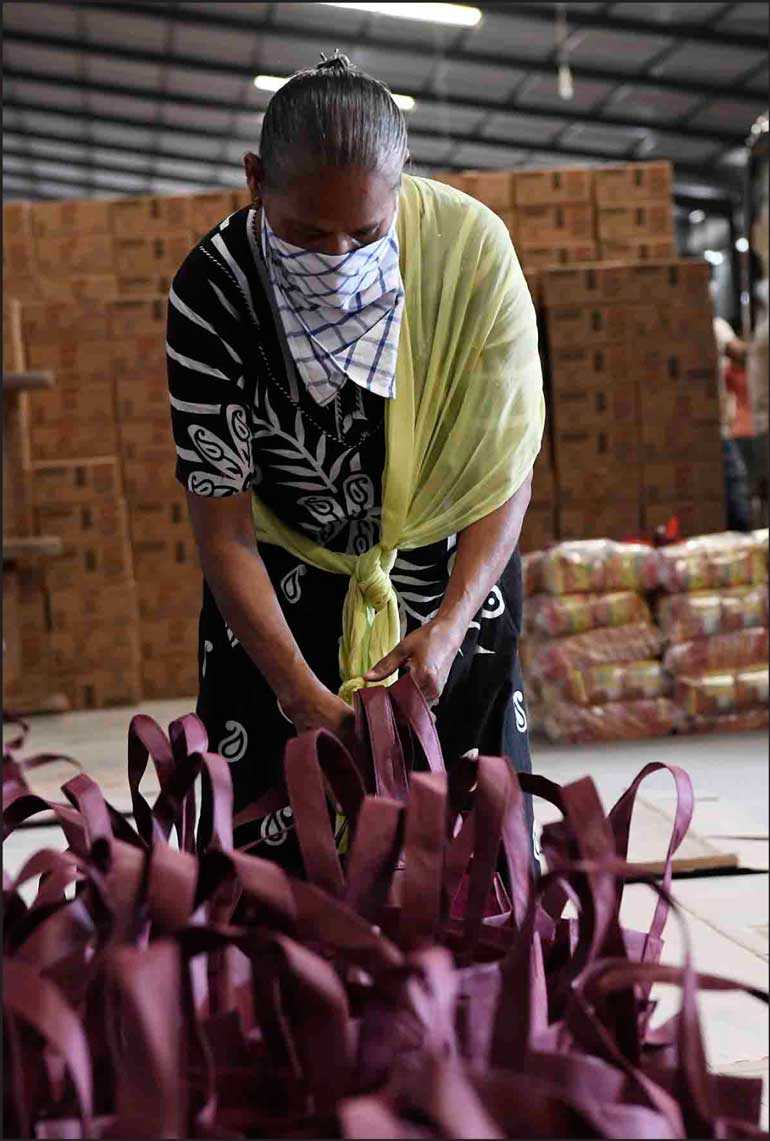Monday Dec 22, 2025
Monday Dec 22, 2025
Thursday, 7 May 2020 00:00 - - {{hitsCtrl.values.hits}}

The post-COVID-19 food production and retailing space must respond to a set of new market realities – recession, changing consumer dynamics and supply chain disruptions. Anchored around food and  personal safety, these new realities challenge our deeply-held beliefs and concepts of how work needs to be done. Here are some pointers where industry is probably heading.
personal safety, these new realities challenge our deeply-held beliefs and concepts of how work needs to be done. Here are some pointers where industry is probably heading.
Consumers in self-preservation mode
Starting from the commute to work, interactions with colleagues, business partners and customers, fear of infection and infecting others will shape how consumers shop and eat.
They are likely to minimise their weekly trips to supermarkets to avoid the inconvenience of strict social distancing measures and risks associated with shopping. Early adoption of home delivery and online vendors is likely.
Protecting the aged
Another aspect of the survival instinct is the anxiety associated with the health and wellness of the aged and strategies to shield them from exposure. Statistically, Sri Lanka’s greying population and relatively high dependency ratio (projected at +16%, 2020 and of 53.4, 2018) could worsen their fears.
However, there’s hope: insights from Neilson (2018) on the greying of Asia, shed light on four macro environment lifestyle trends that are contributing to an increased focus on health and wellness: an aging global population, rising chronic-disease rates; rise in self-care, treatment and prevention; and increasingly educated and connected consumers.
Further, a growing trend among greying seniors is avoidance of products using artificial ingredients, hormones and antibiotics, genetically modified organisms (GMOs) and bisphenol A in food applications. Points to note for manufacturing companies.
In a recession, customers on tight budgets seek to balance value, simplicity and convenience in health and wellness products on the one hand and to manage their purchases without compromising on dietary needs of elders under their care, on the other. Since adults “consume food as medicine and as a means of addressing chronic ailments”, manufactures offering new product concepts must focus on these simple and “back to basics” functional foods.
Sanitised and untouched by human hands
Consumer apprehensions about food safety if unaddressed by corporates could result in loss of customers. Thus, when building new ways of working, managements must address food handler health and safety practices at every stage of food production and delivery. Lack of transparent processes and integrity of value chains, etc., could result in loss of market share.
Expect consumers to respond positively to companies offering products that assure protective packaging, automated production processes and internationally accepted food safety standards. Consumers would factor “transparency and full disclosure” as the cost of safety built into the products they purchase.
Bricks to clicks
Safety concerns of consumers could deter visits to brick and mortar stores, particularly large format supermarkets. Customers would be weary pushing a shopping cart down narrow aisles, forcing a rethink of store formats and locations. Your neighbourhood grocer, the smaller, traditional kade, would turn saviour as customers begin to trust them more.
Competing retailing business models will have to transition from low skilled labour intensive to tech savvy organisations. The change process can be painful, particularly the speed with which backend process could be integrated, such as order processing systems, response agility and CRM processes to engage online customers.
Retailers may need to forge partnerships with companies offering high levels of competency in specific areas such as managing call centres, order processing and dispatch.
Out of home dining is set to struggle
Sri Lankans haven’t been in step with neighbours in dining out; the slow growth trajectory is attributed to poor economic performance, cultural norms and concerns about security. The sluggish development of the HoReCa (hotel, restaurant and café) sectors will have more hurdles to surmount, as customer expectations change.
Crowded restaurants would give way to higher priced fine dining formats offering guests privacy and secure spaces. At the value end, reliance on street food and popular takeout outlets that boast roadside open hot kitchens would need to rethink their business models. This is because jittery diners may not risk purchasing their favourite takeouts, such as kottu, egg hoppers and Chinese fried rice if food is not prepared hygienically.
Further, for both these business models, investment in health and safety, and home delivery being part of their service mix would become critical for their success.
Cooked and consumed at home
The prevalence and popularity of home-cooked meals would continue to remain. However, as consumers become more discerning, and worry about food safety, their expectations and perceptions of value too would change over time. Due to heightened awareness of risk we should expect growth in demand for food products in either semi or precooked protective packaging.
Mackerel and tuna in a can would be preferred to fish from a wet market. Similarly, frozen and par-baked bakery items would be preferred to purchases from mobile vendors. Microwaveable precooked meals could also become popular. A number of pioneering enterprises are offering these options such as instant rice, noodles and frozen kottu. New product offerings should enter the market to complement existing products as more market opportunities open up.
The future
The fallout from the COVID-19 pandemic will force food manufacturers, retailers and food service companies to reassess and readjust their business models to be able to serve consumers who are about to adapt their lifestyles to counter an unseen but potent enemy. Their choices are driven by heightened awareness of risk and self-preservation.
Businesses must build transparency and authenticity around their products and services to make sure that their actions boost consumer confidence. ‘Let’s fight this together’ is the message that consumers want to hear!
(The writer is a member of the South, South East Asia leadership team of a global multinational and counts over 20 years in senior management positions. These are his personal views and do not reflect the organisation he represents. He may be contacted on email [email protected].)